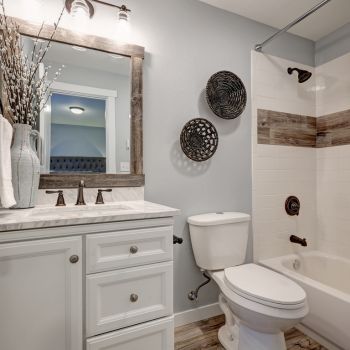Common Toilet Plumbing Problems
 The toilet is a key component of your home’s plumbing and waste system, from flushing to how it fills with water. Yet these operations also open the door to a number of issues that can drive up water bills or potentially contribute to mold and rot. Understand common toilet concerns and their sources.
The toilet is a key component of your home’s plumbing and waste system, from flushing to how it fills with water. Yet these operations also open the door to a number of issues that can drive up water bills or potentially contribute to mold and rot. Understand common toilet concerns and their sources.
Continues to Run
Some people report that their toilet never shuts off, including flushing repeatedly. Others notice that their toilet runs for much longer than expected. In both cases, you’re wasting water and increasing spend.
From a functional perspective, this sound comes from water flowing into the tank via the fill valve. Other components contributing to this cycle include the water supply valve, refill tube and flapper.
Issues contributing to this pattern include:
- A flapper that never fully seals. You’ll also notice water flowing into the bowl or overflow tube.
- The float arm needs to be adjusted.
- The refill tube has fallen into the overflow tube.
- Debris accumulating in the fill valve, which can alter how the water shut-off mechanism works.
- An old, damaged or misaligned fill valve, potentially as the result of a cracked gasket.
Leaks
A leaking toilet should be addressed right away. Moisture seeps into the surrounding floor and subfloor, contributing to rot and mold. As this is wastewater, your home starts to develop a sour or pungent odor.
Leaks also contribute to high water bills but unfortunately, they’re not always obvious. Potential causes of a leaking toilet include damaged or old gaskets, seals and connectors, issues with the supply line, cracked porcelain, loose bolts or corroded pipes.
Unsure whether your toilet is leaking? Water stains on the ceiling or walls directly below the bathroom are a clear sign. Also, droplets resembling condensation on the tank can indicate a small crack or leaking flapper.
No Longer Flushes
A toilet that can’t flush renders this aspect of your plumbing useless. You also risk having waste accumulate in your home or an overflow of sewage. Potential causes of a toilet that won’t flush include:
- A clog – in general, using a plunger with a sufficient seal helps break up the clog and allow water to pass through the plumbing.
- The flush handle may also be an issue. A too tight or too loose handle doesn’t sufficiently turn to initiate this action.
- The lift chain needs to be attached to the lift arm and flapper right where the flush valve is located. Disconnected, loose or tangled components prevent your toilet from flushing fully.
- A damaged flapper can’t create a firm seal with the flush valve and may affect how the toilet flushes. This issue is often accompanied by a too-high or too-low water fill level.
- In some cases, your toilet might not be flushing because the supply line was shut off or has a damaged valve.
If the toilet flushes or fills slowly, the water supply valve may be to blame. The issue may also be mineral deposits along the rinse holes.
Water Level Concerns
Low water tends to occur in conjunction with a clog, while high levels coincide with a toilet that runs too long or cycles through flushing. Beyond these issues, potential causes may include:
- A cracked, damaged or misaligned float
- A leaking valve
- A cracked bowl
Rocking
If you feel shifting or a rocking motion when you sit down, your toilet may not be fully secured to the floor. Damage to the seal surrounding the base contributes to this issue.
Are you concerned about your toilet? Whether it won’t flush, it’s leaking or continues to run, contact the plumbers at MJ Fahy & Sons to schedule an appointment.




